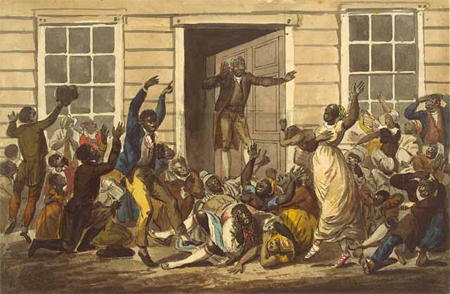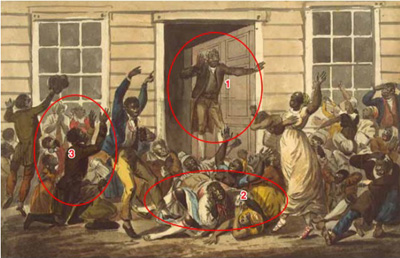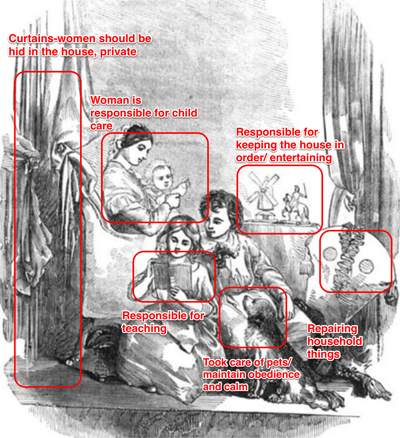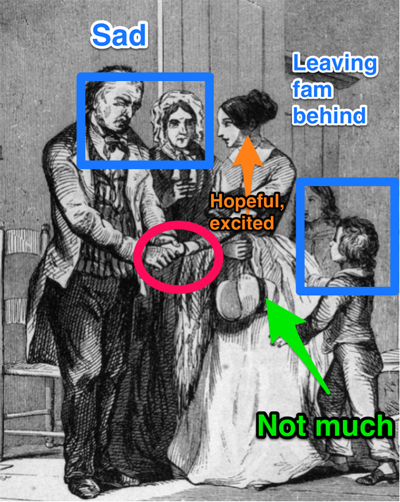Teaching Now: Deep Image Analysis
This is a guest post from Kerry Gallagher, a Technology Integration Specialist at St. John’s Prep, a 1:1 iPad school serving grades 6-12, and former middle and high school history teacher.
Most history educators strive to make the past relevant to the present lives of their students. Deep image analysis, as a part of the broader study of history and primary sources, can really draw students into the time and place they are studying. Images that are photographed or created by the people who lived the historical events have details that documents might not reveal. Facial expressions show emotion, colors show mood, the way people dress or act can convey the perspective of the artist. Once students have learned the context and major ideas of a historical event, deep image analysis makes it possible for them to feel a twinge of the history itself.
Before beginning a deep image analysis, I start with asking a big question. For instance, for the image above I asked, “Can democratic principles spill into areas of life outside of government?” We looked at statistics showing that voting rates increased over time and noticed the number of celebrity preachers was also increasing. Of course, we read impassioned sermons from the likes of Charles Grandison Finney and Richard Allen.
When studying the mill girls of Lowell, Massachusetts I asked students, “Why are some young teenagers eager to leave home so early in life?” We investigated the mill girls who traveled from all over New England, sometimes leaving their small rural villages for the first time in their lives, in order to move to the big city and work in loud crowded factories.
When we were investigating the early women’s movement, we examined women’s responsibilities according to norms in the early 1800s and juxtaposed the private lives of women with the quite public lives of men. I asked students to consider, “Which parts of gender roles are public and which are private?”
Note that these questions are not about history specifically. They are about the nature of human relationships. My students learn by using the events of history as case studies. They are detectives of social justice using primary sources as their evidence.
Once we have an essential question, students may analyze other types of primary sources first or they might dive right into an individual deep image analysis. Using Skitch, each student is able to interact with the historical image in a personal, tactile way.
After, students take that individual experience and share it with their peers, igniting collaborative learning. This learning is eye opening because, of course, every student has a unique understanding of the image. They may identify the same or different details but they often interpret those details in different ways, resulting in a more nuanced understanding of the primary sources.
The discussion around the deep image analyses are lively. Sometimes students challenge and debate the postulates, other times they help one another arrive at big realizations. Together, through shared primary source image analysis, students develop their own answers to essential questions.
So, it starts with a question. The pictures give clues to answer the question. Sharing the clues leads to discussions.
Discussions help each student add shared knowledge to their personalized learning. And at the end of each lesson we always talk about how the answer to the question is similar or different now than it was during the historical events we were studying.
Deep image analyses help us dig into the stories of the past but also help us learn how to question and investigate the stories of today.
More from Kerry Gallagher
Integrating Tech: Using Skitch & Evernote to Analyze Images
Blog: Start with a Question
Twitter: @KerryHawk02




